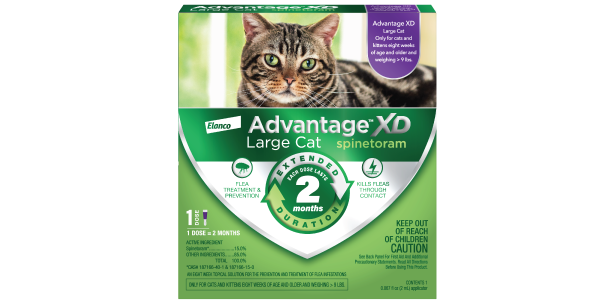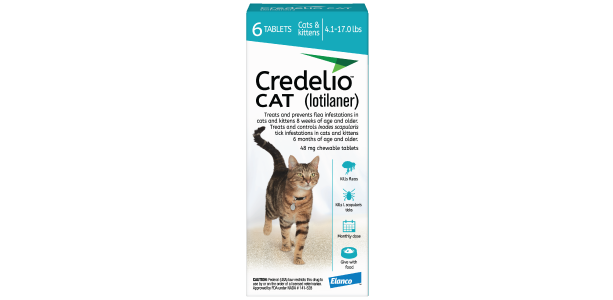Compare flea prevention and treatment products for your pet.
Pet owners have many options to treat, control and guard against fleas. To make sure you select the right flea product for your pet and your lifestyle, it’s important to understand how each option works.
As you get to know how different products help protect your pet from fleas, keep in mind proper application and administration make all the difference. It’s important to choose a prevention or treatment product that works well for you and your pet. Use our comprehensive flea product comparisons to help you decide.
What to Consider When Choosing a Flea Treatment or Prevention Product:
- How long the product lasts
- How quickly the product begins working
- Ease and convenience of application
- Whether the product kills fleas on contact or only after they bite and drink blood from your pet
- Prescription requirements
- Cost per use or application
- Pet age and weight requirements
- Whether the product is waterproof and/or water-resistant
Types of Flea Treatment or Prevention:
- Flea collars for prevention or treatment
- Flea drops for prevention or treatment
- Flea pills for prevention or treatment
- Flea sprays for treatment
- Flea shampoos for treatment
Keep in mind that flea preventives work best when you use them regularly throughout the year. Simply applying for one or two months may not adequately protect your pet year-round.
How Do Flea Collars Work?
New innovations in design and delivery create collars that aren’t like their clunky predecessors. Today’s flea and tick collars provide an easy way to deliver the active ingredients needed to kill and/or repel fleas and ticks — and putting them on your pet can be a simple process.
Pros:
Flea collars remain effective for several months without the need for additional treatment. Today’s flea collars can offer effective protection in thin, flexible and odorless designs that may also be adjustable, non-greasy, water-resistant and odor free. Flea and tick collars are readily available without a prescription from a variety of retailers or from your veterinarian.
Cons:
Flea collars typically come with a higher upfront cost, though the monthly cost can be lower than comparable treatment types.
How Do Flea Drops Work?
Liquid flea treatments, also known as spot-on treatments or topicals, are another popular and effective method for controlling and preventing flea infestations. Applied to the skin, topical flea treatments work by spreading active ingredients over your pet’s body to kill or repel fleas; some flea spot-ons kill only adult fleas, while others interrupt and control multiple stages of the flea life cycle. Topicals typically kill fleas on the pet through contact; this means fleas do not have to bite your pet to die.
Pros:
Some topical products can provide broad-spectrum protection against other external parasite threats like ticks, mosquitoes or lice. Flea spot-ons are readily available without a prescription from a variety of retailers or from your veterinarian.
Cons:
Spot-ons should be applied monthly to help protect dogs and cats against fleas — so you’ll need to remember to administer the treatment each month.
How Do Oral Flea Products Work?
Some pet owners prefer oral flea medication, which are available as tablets or chewables. These products are either preventives, which help prevent a flea infestation, or flea treatments, which can help eliminate an active flea infestation on your pet.
Once ingested, oral flea treatments work by circulating their active ingredients throughout your pet’s bloodstream. When bloodsucking parasites like fleas bite your pet and drink blood, they ingest these active ingredients and die. This means fleas need to bite your dog or cat to be killed.
Short-acting oral flea treatments are readily available without a prescription from a variety of retailers or from your veterinarian. Longer-acting flea preventive orals are available with a veterinarian’s prescription.
Pros:
Tablets are usually flavored and easy to give. The active ingredients start to work quickly. Some oral flea medicines are longer acting and offer flea treatment and prevention to help stop reinfestation; make sure to read the product label for the duration of effectiveness. Many oral flea products also offer protection from other internal and/or external parasites, as well.
Cons:
Preventive flea tablets typically need to be given once a month or every few months, so you’ll need to keep track of when you give them — and some require a veterinarian prescription. Tablets and chews are available as either flea preventives or flea treatments; many oral flea treatments can quickly kill an existing adult flea infestation on your pet, but they do not offer prevention. Additionally, giving a cat a pill can be difficult.
How Do Flea Sprays Work?
Sprays allow you to treat an active infestation on your pet by killing and/or repelling fleas. These treatments simply require you to spritz your pet’s coat (taking care not to get the product too close to your pet’s eyes or mouth) until damp. Sprays can be especially helpful with cats who may be difficult to bathe. Consider keeping a spray on hand in case of a flea emergency.
Pros:
Sprays are inexpensive and effective, working quickly to kill adult fleas on pets with a flea infestation. They also help control flea allergy dermatitis. Flea sprays are readily available without a prescription from a variety of retailers.
Cons:
You’ll need to spray your pet’s entire body for proper coverage, so flea sprays can be more time-consuming than some other treatment options.
How Do Flea Shampoos Work?
Flea and tick shampoos are applied just like other bath products, killing adult fleas on contact and washing away the eggs, flea allergens and flea waste currently on your pet. After applying the shampoo, work the product thoroughly into the pet’s coat. When finished, thoroughly rinse your pet.
Pros:
Many formulas kill adult fleas on pets. Flea shampoos are readily available without a prescription from a variety of retailers.
Cons:
Some pets are difficult to bathe, and shampoos do not offer flea prevention.
Help Keep Your Pet Happy
There is a whole range of various pet flea treatments available that work in slightly different ways. Whichever flea treatment or prevention method you choose, aim to make the application experience as pleasant as possible. Praise your pet and show them your love to make these moments less stressful.

Seresto® Flea & Tick Collar for Dogs
An easy-to-use, odorless, non-greasy collar that kills and repels fleas and ticks for 8 continuous months.

Seresto® Flea & Tick Collar for Cats
An easy-to-use, odorless, non-greasy collar that kills and repels fleas and ticks for 8 continuous months.

Advantage® XD (spinetoram)
Kills fleas for two months with one dose, outlasting the typical six-week flea life cycle — and the monthly competition.

Credelio® (lotilaner)
As a trusted resource, your vet can provide additional information on how prescription-only Credelio can protect your dog from ticks and fleas all year long when taken monthly.

Credelio® CAT (lotilaner)
Protect your feline friend with Credelio Cat, the first and only flea and tick chewable for cats.

K9 Advantix® II
A convenient, monthly topical application that kills and repels fleas and ticks through contact, so they don't have to bite your dog to die. Do not use on cats.

Advantage® Treatment Shampoo for Dogs & Puppies
A treatment shampoo that kills fleas and ticks on contact.

Advantage® Treatment Shampoo for Cats & Kittens
A treatment shampoo that kills fleas and ticks on contact.
Related Articles
Credelio® (lotilaner)
Indications:
Credelio kills adult fleas and is indicated for the treatment and prevention of flea infestations and treatment and control of tick infestations (lone star tick, American dog tick, black-legged tick, and brown dog tick) for one month in dogs and puppies 8 weeks and older and 4.4 pounds or greater.
Important Safety Information:
Lotilaner is a member of the isoxazoline class of drugs. This class has been associated with neurologic adverse reactions including tremors, incoordination, and seizures. Seizures have been reported in dogs receiving this class of drugs, even in dogs without a history of seizures. Use with caution in dogs with a history of seizures or neurologic disorders. The safe use of Credelio in breeding, pregnant or lactating dogs has not been evaluated. The most frequently reported adverse reactions are weight loss, elevated blood urea nitrogen, increased urination, and diarrhea. For complete safety information, please see Credelio product label or ask your veterinarian.
Credelio® CAT (lotilaner)
Indications:
Credelio CAT kills adult fleas and is indicated for the treatment and prevention of flea infestations for one month in cats and kittens 8 weeks of age and older and weighing 2 pounds or greater.
Credelio CAT is also indicated for treatment and control of black-legged tick infestations for one month in cats and kittens 6 months of age and older and weighing 2 pounds or greater.
Important Safety Information:
Lotilaner is a member of the isoxazoline class of drugs. This class has been associated with neurologic adverse reactions including tremors, incoordination, and seizures. Neurologic adverse reactions have been reported in cats receiving isoxazoline class drugs, even in cats without a history of neurologic disorders. Use with caution in cats with a history of neurologic disorders. The safety of Credelio CAT has not been established in breeding, pregnant and lactating cats. The effectiveness of Credelio CAT against black-legged ticks in kittens less than 6 months of age has not been evaluated. The most frequently reported adverse reactions are weight loss, rapid breathing and vomiting. For complete safety information, please see Credelio CAT product label or ask your veterinarian.





